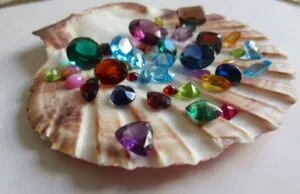
Table of Contents
The cheek piercing, a growing trend over recent years, captivates many with its ability to create a dimpled look and enhance smiles. As its popularity rises among both men and women, it’s important to be informed about the potential risks of getting one. While these piercings offer a charming, brightened appearance, they also come with considerations regarding healing and aftercare.
Thinking about getting one? Let’s dive into what you should know to make an informed decision.
What is the Cheek Piercing?
A cheek piercing, also called a ‘dimple piercing’, is a perforation on the side of the face, typically located just above the side of the mouth. It can emulate a dimpled look even if you don’t have any dimples. If you do already have a dimple, you can dress it up and accentuate it by placing the piercing inside it. However, there are a few variations to this piercing, including the Cheekbone piercing (more on this below).
The location of the piercing should be just right and needs to be carefully checked by the piercer beforehand to avoid any complications. If not done properly, the parotid duct which drains saliva from the parotid gland to the mouth could be permanently damaged and this can result in saliva continuously running down the cheek! So, this is one procedure that you definitely don’t want your piercer to get wrong.
Origin and History of Cheek Piercings
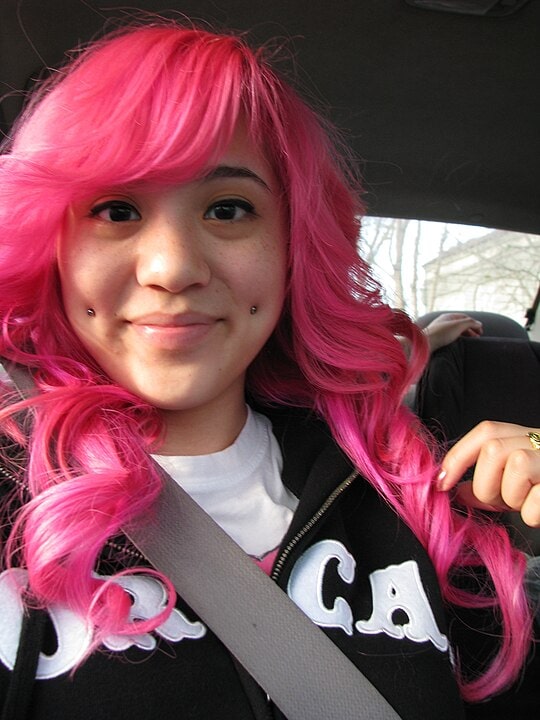
Cheek piercings, often linked to the modern body modification trend, don’t have as deep-rooted a history as some other facial piercings. Many cultures throughout history have pierced various parts of the face, but tracing the specific origins of cheek piercings proves difficult.
Today’s interest in cheek piercings, especially in Western societies, stems from a desire to mimic or highlight dimples and the growing acceptance of body art since the late 20th century. Many indigenous cultures worldwide have embraced facial modifications like piercings, tattoos, and scarification, each holding unique cultural and aesthetic value.
Even if we can’t pin down the exact beginnings of cheek piercings, their modern popularity highlights a global trend toward self-expression and owning one’s body.
Different Types of Cheek Piercings
There are 3 popular variations of cheek piercings:
Single Cheek Dimple Piercing

This involves perforation of only one cheek. It’s an excellent option if you’re not ready to go in for two piercings on either cheek and would like to get one piercing done at a time, or if you’re pairing it up with other facial piercings.
Dermal Cheek Piercing
This looks similar to the single cheek piercing but differs in that it is a partial piercing through the cheek, with only a single point. The needle goes in but doesn’t come out the other end, meaning that the perforation is just below the skin instead of all the way through the flesh. Many prefer this option because as you only need to deal with the healing of the surface, aftercare is less complicated. However, it does not quite have the same dimpled look that the single piercing does.
Cheekbone Cheek Piercing
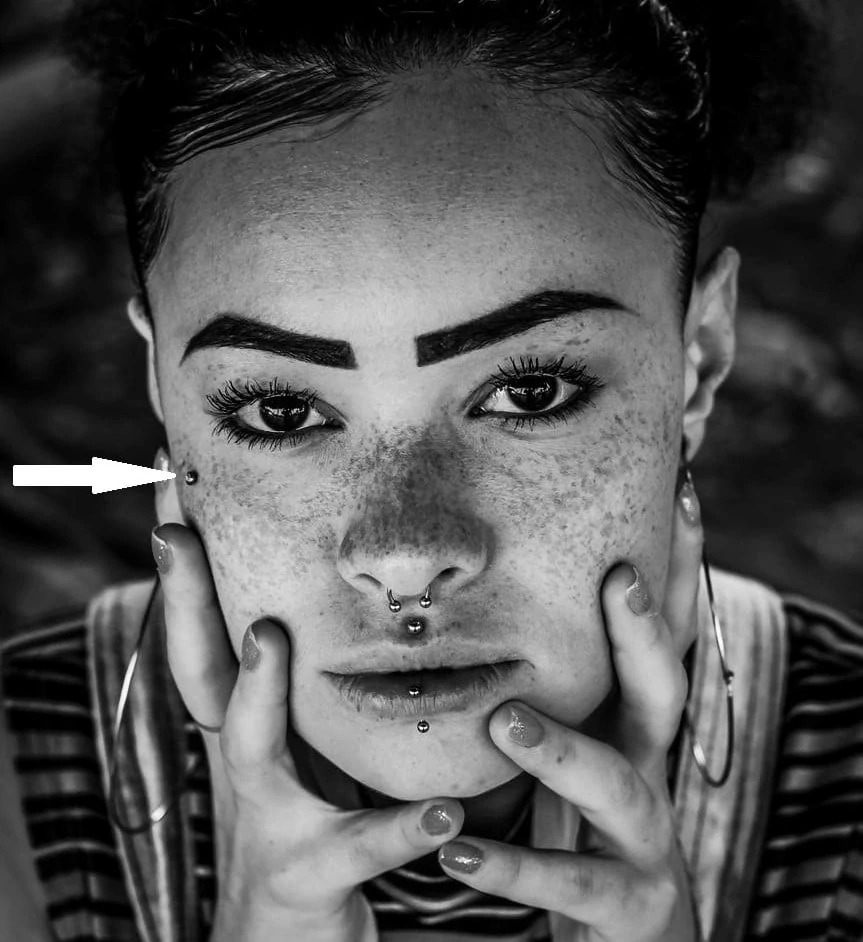
This type of piercing is located further up on the cheek and is also known as an Upper Cheek Piercing or a High Cheek Piercing. Because these piercings can’t go through your oral cavity, they’re typically either surface or dermal piercings.
What’s the Best Cheek Piercing Jewelry?
Typically, these piercings are done with 14 gauge or 16 gauge jewelry. The initial piercing jewelry should be much longer to accommodate any swelling that may occur and is usually done with a labret stud or a straight barbell. Once the swelling has reduced, you should change your jewelry to a smaller size to suit the thickness of your cheek. Here are some of the most popular jewelry styles for this piercing:
Labret Studs:
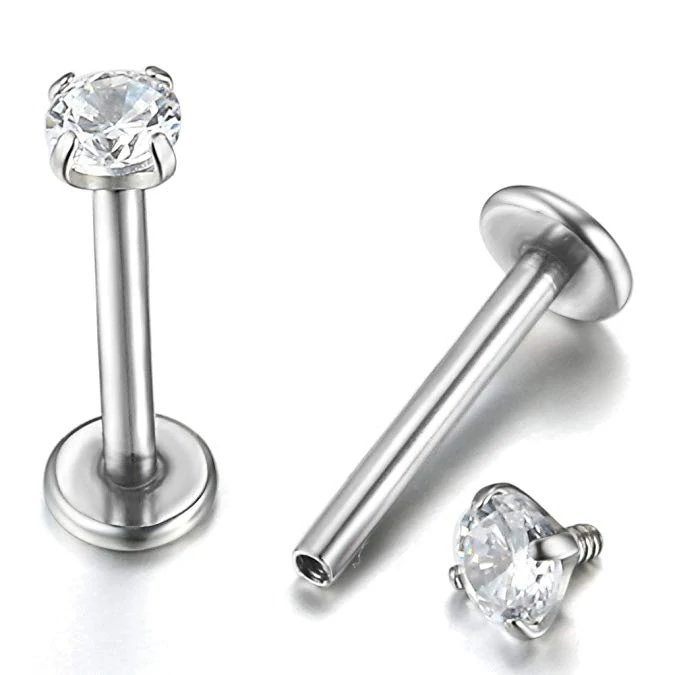
These are the most common types of jewelry for cheek piercings. They are convenient because the flat disc of the back of this stud sits well on the inside of the cheek and stay away from your teeth, making it more convenient for you. There are several types of labret studs that you can opt for. If you’re going for a flashy look, you can choose one with sparkling gemstones or if you prefer a simple look you can always go for a simple bead end.
Straight Barbells:
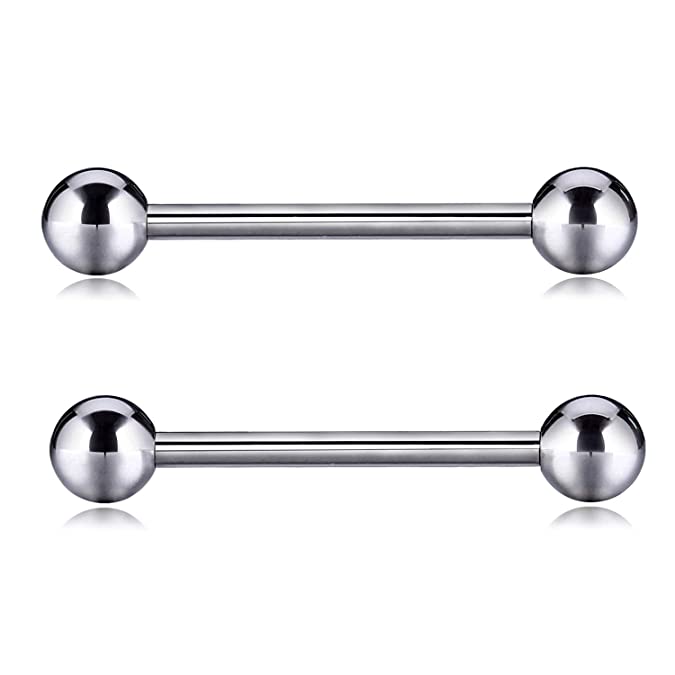
Although this style of jewelry also is versatile, looks beautiful and flashy, the ball backing could rub against your teeth unlike the labret stud, causing dental issues down the line. Therefore, it may not be the best choice for long term wear.
Is the Cheek Piercing Painful?

Cheek piercings are generally considered to be less painful than most other types of piercings. Most people report that it hurts less than getting cartilage pierced. However, this depends on your level of pain tolerance and since pain is a subjective experience, it is difficult to say exactly how much this piercing would hurt or otherwise. A positive attitude and mental preparation beforehand will help reduce the pain and make you feel less nervous about the procedure.
Cheek Piercing Healing and Aftercare

Cheek piercings are extremely difficult to heal and usually take around 8 to 12 weeks during which time they can be exceptionally prone to complications. It can take up to a year to heal completely especially if it’s not taken good care of so make sure to pay a lot of attention to it and remember to follow the rules of aftercare during this time. This will speed up the healing process and avoid potential complications.
- Clean the piercing in and out – getting food stuck in the piercing is a possibility since it is located right around the same area where you chew food so make sure you clean the piercing from the inside of your mouth as well as the outside. Don’t use mouthwash since the alcohol found in mouthwash could interfere with the healing process. Instead, try an oral aftercare solution or a sea salt soak which will help the piercing to heal faster. Try as much as you can to chew food from the opposite side of your mouth unless of course you have both cheeks pierced in which case it can be quite difficult to avoid food getting lodged in there.
- Don’t play with the jewelry – as tempting as it may seem to play around and pull at your jewelry, refrain from doing so since continuous movement can impede healing. Playing with your jewelry encourages jewelry rejection, infections and scarring. Do the best you can to leave your jewelry alone and if you have to touch the piercing, make sure your hands are cleaned beforehand.
- Keep chemicals away from your piercing – harsh chemicals found in face wash, sunscreen, makeup and other toiletries used for the face can cause irritation which in turn can lead to other complications. Therefore, you must do your best to avoid using them as much as possible. Cheek piercings are highly prone to irritation and other issues, so it’s best if you can avoid these products altogether.
- Clean at least 2 to 3 times a day – clean your piercing at least 2 or 3 times a day and make sure to maintain oral hygiene as best you can in order to avoid it getting infected. Dry the piercing carefully and gently with a fresh paper towel.
It’s normal to experience pain and swelling in the first week after getting your piercing done. However, if you notice any bleeding, oozing of yellowish pus or the area getting increasingly red or swollen after some day, see a doctor immediately since these can signify an infection.
How Much Does a Cheek Piercing Cost?
A cheek piercing is a complicated procedure that can cost anywhere from $30 – $100 and depends on the location. It can be a dangerous piercing to go for so make sure to find a piercer with skill, expertise and tons of experience. A piercer without sufficient experience could damage your parotid duct which is no small matter and would mean a lifelong challenge for you. Therefore, be vigilant, research and choose your piercer carefully.
Cheek Piercing Pros and Cons
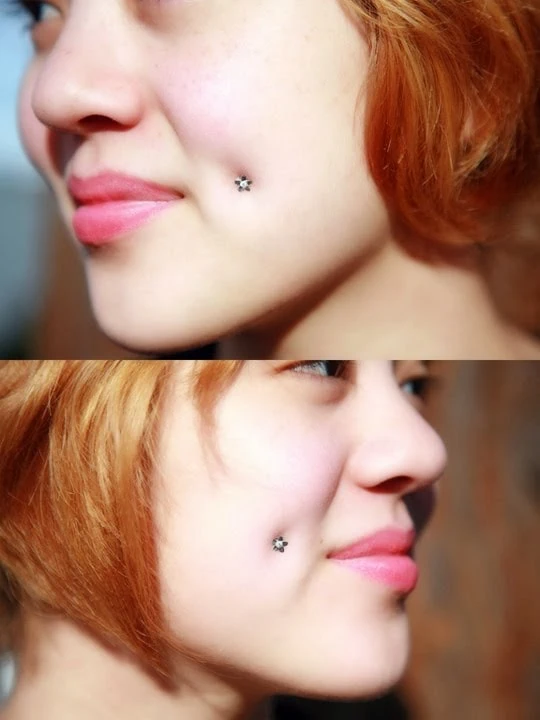
Since cheek piercings are much more complicated than other types of piercings, you might want to give it some thought before you go ahead and get it done. We suggest weighing the pros and cons before you make your decision.
Cheek Piercing Pros:
- It gives the gorgeous dimpled look that most people love.
- It’s less painful than most other piercings.
- It pairs well with other types of piercings.
- Offers a unique way to personalize one’s appearance.
- It’s trendy. It’s gaining popularity in modern body modification culture.
Cheek Piercing Cons:
- There is a risk of damage to your parotid duct which cannot be undone later.
- It requires extra care and attention than other piercings.
- They are more difficult to heal and can result in scarring.
- It’s not considered a professional look and can be an issue with regards to workplace dress codes.
Wrapping Up …
If you’re a first-time piercer, it’s best not to go for a cheek piercing since it’s more complicated. Before you decide on this piercing, ensure that you have the time and the resources to take good care of it and be ready to commit to it entirely to avoid regretting it somewhere down the line. Once you’re sure this is the right piercing for you, get it done and enjoy your new look!







